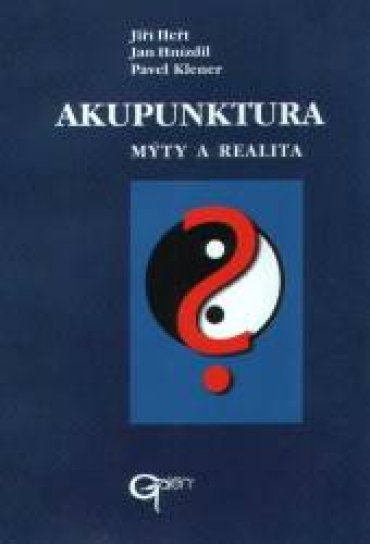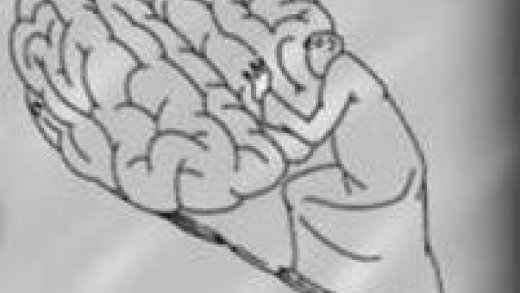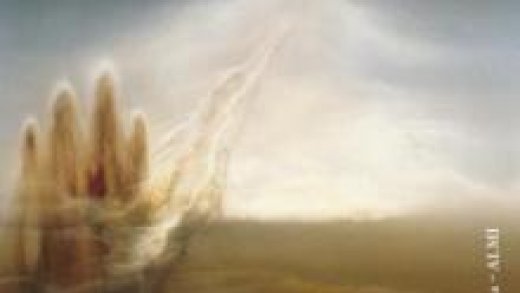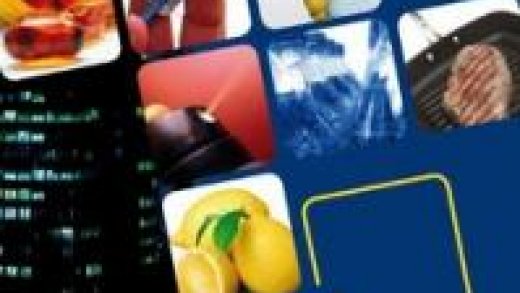The acupuncture (ACU) appears to be a chameleon.
Sometimes, it is considered to be a typical method of the alternative medicine (AM), sometimes a part of the scientific medicine. According to some, e.g. to a special committee of the European Commission, the effectiveness of the ACU is not convincing, or there is no scientific evidence of it.
On the contrary, the conference of the NIH (National Institutes of Health – USA) proclaimed that such evidence exists. The same position assumes the British Medical Association and the WHO too, proposing 40 indications for the ACU therapy.
The same controversy can be found among insurance companies and among medical chambers. The German Medical Chamber sais that ACU is not scientifically based, the position of the Austrian Medical Chamber is opposite.
Even one and the same organisation can assume a controversial attitude. According to its statutes the Czech Medical Association accepts the use only of such diagnostic, preventive and therapeutical methods, the nature and effects of which are based on the contemporary scientific evidence. Nevertheless, in 1990 this society accepted the Czech Acupuncturist Society among its scientific societies as a regular member.
Why is it so? Many reasons for such a diversity of opinions exist, the scientific, professional, economic, political and pragmatical ones but one of them is never mentioned. Nobody sais or better accepts the fact that ACU is not a homogeneous, uniform and clearly defined method. Nearly all authors and organisations speak of ACU in general only without differentiation between its different variants. From this reason, it is impossible to come to a consensual, generally accepted position.
There exist many of ACU variants and they can be divided in three main groups: the classical oriental all-body ACU, the modern, scientific one and the pseudoscientific one.
According to new historical studies of american authors, even the original, old ACU was never standardized. Many different regional variants existed in China and in neighbouring states too. And after penetrating to USA, the acupuncture spread in many local variants too, according to Foster. The so called TCM – Traditional Chinese Medicine is also only a special, artificially formed variant, aiming to find a materialistic explanation for principles chi and jin-jang. Another widely used method, e.g. in Japan and Great Britain, is the Five Element ACU. One could continue with acupressure, moxibustion and some new variants of the ACU, such as electro(acu)puncture, laserpuncture and magnetopuncture.
All these forms belong to the same group, being based on the taoistic spiritual philosophy and on the alleged existence of 12 pairs o meridians and hundreds of active points. However, we know to-day that the theoretic principles as well as the existence of meridians and active points do not correspond to scientific knowledge and could never be proved.
The second branch, the modern ACU originated two or three decades ago from the works of Felix Mann and from experimental studies trying to find the mechanism of effects of a needle punction. This new stream in ACU rejected the old spiritual theory of ACU together with the idea of meridians and points. As for the mechanism of the needle puncture effects, three posibilities were found. The first is the neural, reflex mechanism. The second one is the opioid mechanism, liberation of different monoamines and peptides with analgetic effects in the central nervous system after a punction. The third, may be the most important factor, is the psychical, placebo effect.
Based on a critical analysis of the classical ACU and on the new experimental findings, some very simple but effective variants were proposed: the trigger point ACU, the segmental ACU, the periosteal ACU, the micro- or single-needle ACU or also the electroanalgesie. All these variants are now in use and belong to the broad spectre of methods of the official medicine.
Besides these rational adaptations of ACU, several fantastic, nonsensical variants were invented by some individuals in the last half century. To this group belong the so called microsystems ACU, Voll´s electroacupuncture and its modifications such as the electroinformatics sec. Lupičev, Nakatani´s Ryodoraku and also the resonanztherapy, invented by Morell and Rasche.
The microsystems should exist, according to proponents of these methods, as projections of the human body, including the meridians and active points, on different parts of the body surface as so called displays, replicas, homunculi, holograms and so on. Nogier described the auricular microsystem, Gleditsch the dental systém. Every tooth should correspond to a specific segment, organ or disease. Dale invented several other microsystems and Park recently „discovered“ a „very complicated“ palmar system. However, the conception of microsystems defy all biological laws and it is only logical that their existence was never proved. Moreover, every author has another idea on the form of the given microsystem and on points positions.
As for the Voll´s electroacupuncture (EAV), it can be classified, beyond any doubt, as a pure charlatanry. The electrical current of low frequencies, produced by a generator, is led to one electrode, hold in the hand of the patient. Information on the disease is gathered by the second electrode placed on terminal points of meridians on fingers or toes. This methods is also used for diagnostics: Sealed ampoules with homoeopathic solutions are placed nearby the electrical line and the current should be influenced by specific mystic vibrations. A hand on the generator indicates which of the solutions is the best one for the „detected“ hypothetical disease. It is clear that the EAV is a fantastic synthesis of ACU, homoeopathy and parapsychology. Nevertheless, this method becomes a preferred, booming and massively propagated variant of ACU in our country.
I wish now to make a short summary:
The classical, oriental ACU is a nonscientific, but from the historical point of view a remarkable method. Nowadays, is can be usuful (and is recommended by the WHO) in non-developed countries only, but it is not apt to be accepted by the scientific medicine.
The modern branch of ACU (if one will still take these new methods for acupuncture) is based on experimental studies of the mechanisms of the effect of a needle punction and can be, or better has been accepted in some countries as a regular part of the official medicine for its analgetic effects.
The pseudoscientific ACU i a curious mixture of newly invented absurd variants of ACU. They stay in sharp conflict with the scientific knowledge and must be refuted by medicine.
I an convinced that broad consequences in the field of medicine, medical organisations, health system legislation and also in the politics on insurance companies must be drawn from this splitting of ACU in the three described segments.
As for the classification of ACU as a method of the evidence-based or of the alternative medicine, the answer depends on the criteria used. According to our definition the AM is characterised by several marks, two of them being dominant:
1/ The theory and praxis of AM methods are in contradiction with scientific knowledge,
2/ No specific therapeutic effectiveness of the AM methods could be proved.
If we use this definition, only the modern, western form of ACU can be ranged to the modern medicine. The classical as well as the pseudoscientific variants belong to the scope of the alternative medicine.
Thank You for Your attention.
Sometimes, it is considered to be a typical method of the alternative medicine (AM), sometimes a part of the scientific medicine. According to some, e.g. to a special committee of the European Commission, the effectiveness of the ACU is not convincing, or there is no scientific evidence of it.
On the contrary, the conference of the NIH (National Institutes of Health – USA) proclaimed that such evidence exists. The same position assumes the British Medical Association and the WHO too, proposing 40 indications for the ACU therapy.
The same controversy can be found among insurance companies and among medical chambers. The German Medical Chamber sais that ACU is not scientifically based, the position of the Austrian Medical Chamber is opposite.
Even one and the same organisation can assume a controversial attitude. According to its statutes the Czech Medical Association accepts the use only of such diagnostic, preventive and therapeutical methods, the nature and effects of which are based on the contemporary scientific evidence. Nevertheless, in 1990 this society accepted the Czech Acupuncturist Society among its scientific societies as a regular member.
Why is it so? Many reasons for such a diversity of opinions exist, the scientific, professional, economic, political and pragmatical ones but one of them is never mentioned. Nobody sais or better accepts the fact that ACU is not a homogeneous, uniform and clearly defined method. Nearly all authors and organisations speak of ACU in general only without differentiation between its different variants. From this reason, it is impossible to come to a consensual, generally accepted position.
There exist many of ACU variants and they can be divided in three main groups: the classical oriental all-body ACU, the modern, scientific one and the pseudoscientific one.
According to new historical studies of american authors, even the original, old ACU was never standardized. Many different regional variants existed in China and in neighbouring states too. And after penetrating to USA, the acupuncture spread in many local variants too, according to Foster. The so called TCM – Traditional Chinese Medicine is also only a special, artificially formed variant, aiming to find a materialistic explanation for principles chi and jin-jang. Another widely used method, e.g. in Japan and Great Britain, is the Five Element ACU. One could continue with acupressure, moxibustion and some new variants of the ACU, such as electro(acu)puncture, laserpuncture and magnetopuncture.
All these forms belong to the same group, being based on the taoistic spiritual philosophy and on the alleged existence of 12 pairs o meridians and hundreds of active points. However, we know to-day that the theoretic principles as well as the existence of meridians and active points do not correspond to scientific knowledge and could never be proved.
The second branch, the modern ACU originated two or three decades ago from the works of Felix Mann and from experimental studies trying to find the mechanism of effects of a needle punction. This new stream in ACU rejected the old spiritual theory of ACU together with the idea of meridians and points. As for the mechanism of the needle puncture effects, three posibilities were found. The first is the neural, reflex mechanism. The second one is the opioid mechanism, liberation of different monoamines and peptides with analgetic effects in the central nervous system after a punction. The third, may be the most important factor, is the psychical, placebo effect.
Based on a critical analysis of the classical ACU and on the new experimental findings, some very simple but effective variants were proposed: the trigger point ACU, the segmental ACU, the periosteal ACU, the micro- or single-needle ACU or also the electroanalgesie. All these variants are now in use and belong to the broad spectre of methods of the official medicine.
Besides these rational adaptations of ACU, several fantastic, nonsensical variants were invented by some individuals in the last half century. To this group belong the so called microsystems ACU, Voll´s electroacupuncture and its modifications such as the electroinformatics sec. Lupičev, Nakatani´s Ryodoraku and also the resonanztherapy, invented by Morell and Rasche.
The microsystems should exist, according to proponents of these methods, as projections of the human body, including the meridians and active points, on different parts of the body surface as so called displays, replicas, homunculi, holograms and so on. Nogier described the auricular microsystem, Gleditsch the dental systém. Every tooth should correspond to a specific segment, organ or disease. Dale invented several other microsystems and Park recently „discovered“ a „very complicated“ palmar system. However, the conception of microsystems defy all biological laws and it is only logical that their existence was never proved. Moreover, every author has another idea on the form of the given microsystem and on points positions.
As for the Voll´s electroacupuncture (EAV), it can be classified, beyond any doubt, as a pure charlatanry. The electrical current of low frequencies, produced by a generator, is led to one electrode, hold in the hand of the patient. Information on the disease is gathered by the second electrode placed on terminal points of meridians on fingers or toes. This methods is also used for diagnostics: Sealed ampoules with homoeopathic solutions are placed nearby the electrical line and the current should be influenced by specific mystic vibrations. A hand on the generator indicates which of the solutions is the best one for the „detected“ hypothetical disease. It is clear that the EAV is a fantastic synthesis of ACU, homoeopathy and parapsychology. Nevertheless, this method becomes a preferred, booming and massively propagated variant of ACU in our country.
I wish now to make a short summary:
The classical, oriental ACU is a nonscientific, but from the historical point of view a remarkable method. Nowadays, is can be usuful (and is recommended by the WHO) in non-developed countries only, but it is not apt to be accepted by the scientific medicine.
The modern branch of ACU (if one will still take these new methods for acupuncture) is based on experimental studies of the mechanisms of the effect of a needle punction and can be, or better has been accepted in some countries as a regular part of the official medicine for its analgetic effects.
The pseudoscientific ACU i a curious mixture of newly invented absurd variants of ACU. They stay in sharp conflict with the scientific knowledge and must be refuted by medicine.
I an convinced that broad consequences in the field of medicine, medical organisations, health system legislation and also in the politics on insurance companies must be drawn from this splitting of ACU in the three described segments.
As for the classification of ACU as a method of the evidence-based or of the alternative medicine, the answer depends on the criteria used. According to our definition the AM is characterised by several marks, two of them being dominant:
1/ The theory and praxis of AM methods are in contradiction with scientific knowledge,
2/ No specific therapeutic effectiveness of the AM methods could be proved.
If we use this definition, only the modern, western form of ACU can be ranged to the modern medicine. The classical as well as the pseudoscientific variants belong to the scope of the alternative medicine.
Thank You for Your attention.







